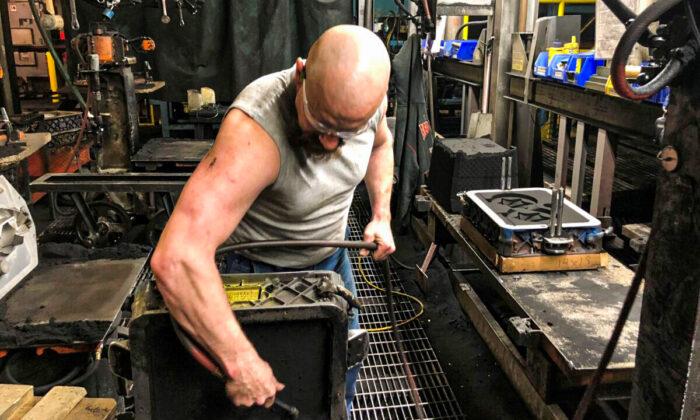U.S. unit labor costs rose sharply in the third quarter, while productivity declined at its fastest pace since 1960, adding to signs of persistently high inflation.
The Labor Department
said on Dec. 7 that unit labor costs, the price of labor per single unit of output, increased at a 9.6 percent annualized rate in the third quarter after rising at a 5.9 percent pace in the April–June quarter.
The new data represents an upward revision from the 8.3 percent pace of unit labor cost growth the Labor Department reported in November and well above
consensus forecasts of 8.4 percent.
The sharp rise in third-quarter unit labor costs reflects a 3.9-percent increase in hourly compensation and a 5.2-percent decrease in labor productivity. The 5.2-percent decline in productivity is the largest since the second quarter of 1960 when the measure fell 6.1 percent.
The spike in unit labor costs reinforces the view that inflation, which in the 12 months through October hit its highest level in 31 years, is likely to be more persistent than many economists, Fed officials, and members of the Biden administration previously thought.
A 48-member panel of business economists recently sharply raised its
expectations for inflation compared to its September forecast, with two-thirds predicting that wage increases will keep inflation higher over the next three years.
The panelists, polled by the National Association for Business Economics (NABE), expect consumer prices to rise by 6 percent in the final quarter of 2021 compared to the same quarter in 2020, marking a sharp upward revision to the 5.1 percent rate of inflation they predicted in September for the same period.
The Federal Reserve, too, has boosted its forecast for its preferred inflation gauge, the so-called core PCE price index. The Fed said in its most recent summary of economic projections (
pdf) that it expects a core PCE reading of 3.7 percent for all of 2021. That’s sharply higher than its June forecast of 3.0 percent but well below the NABE panelists’ prediction for the core PCE inflation rate to hit 4.9 percent.
The International Monetary Fund
last week warned of growing inflationary pressures, particularly in the United States, and urged the Fed to focus more on inflation risks.
In the face of surging inflation, the Fed has moved to phase out its massive $120 billion bond-buying program, which has provided a tailwind to risk assets like stocks.
Current plans are for a $15 billion per month reduction, which would conclude the taper in June, though the Fed has left the door open to a faster timeline if warranted by persistent inflationary pressures.
A number of economists have urged a faster taper schedule, with Goldman Sachs analysts
recently predicting that high inflation would force the Fed to double its pace to $30 billion per month, bringing the taper to a close in mid March.





